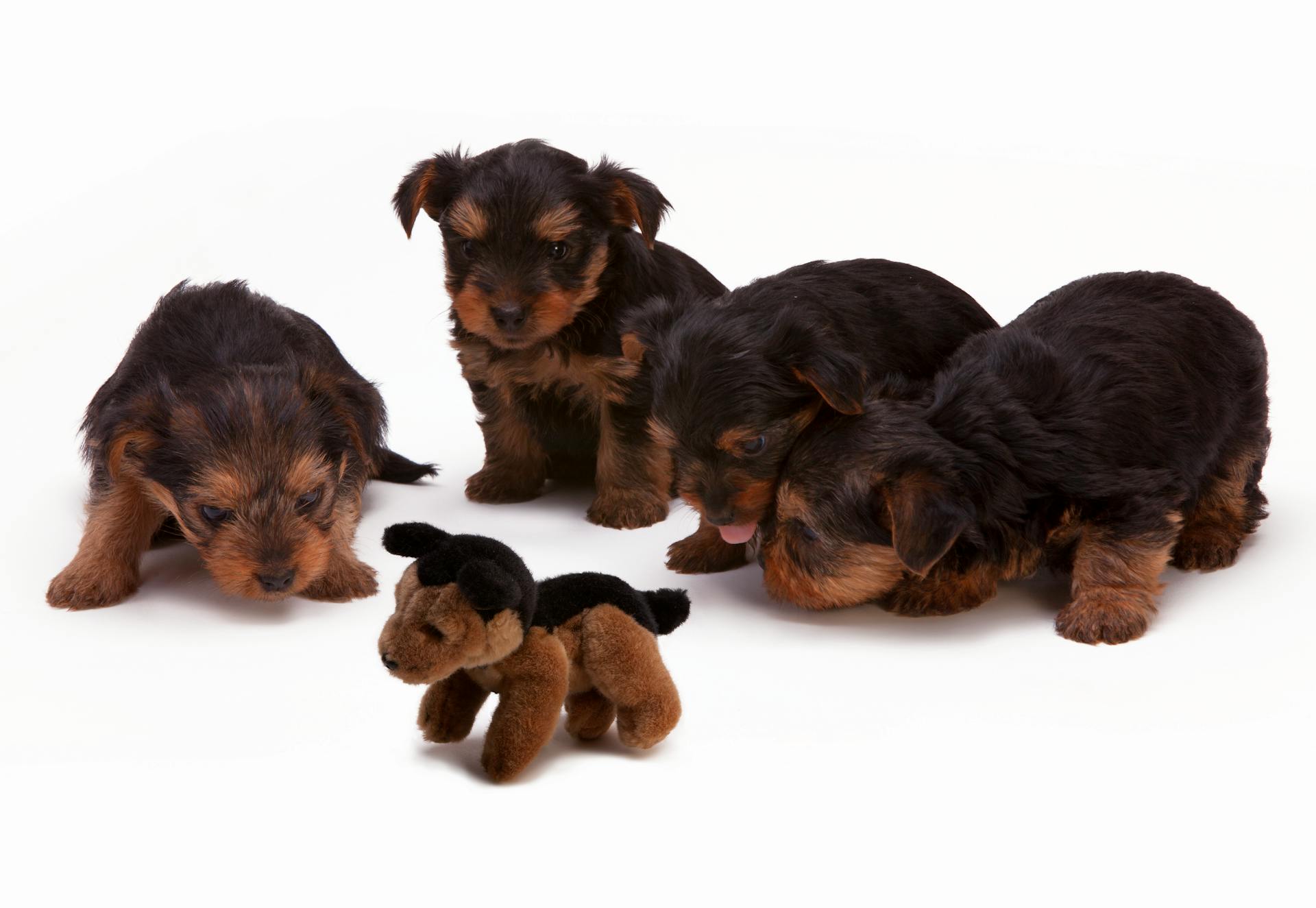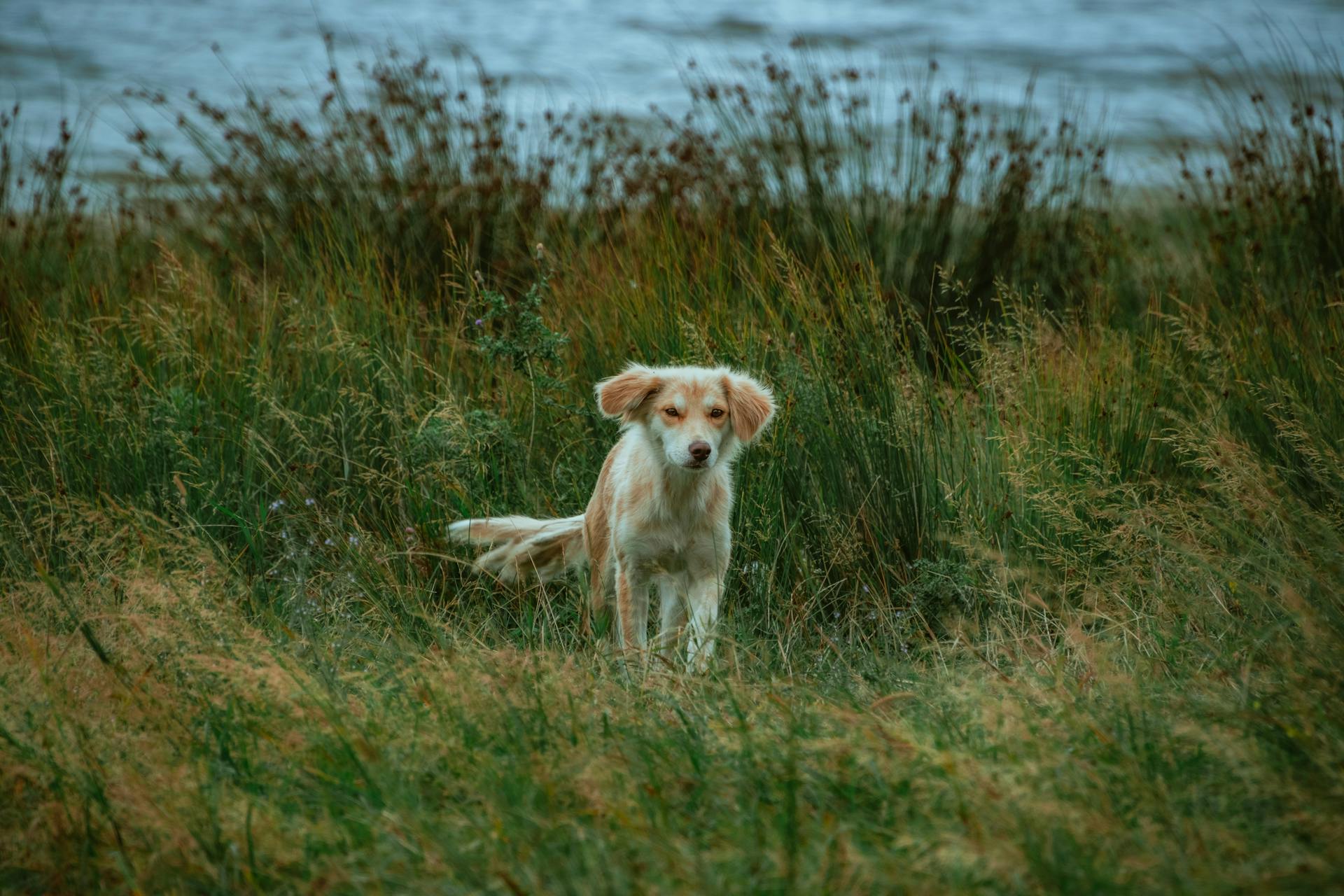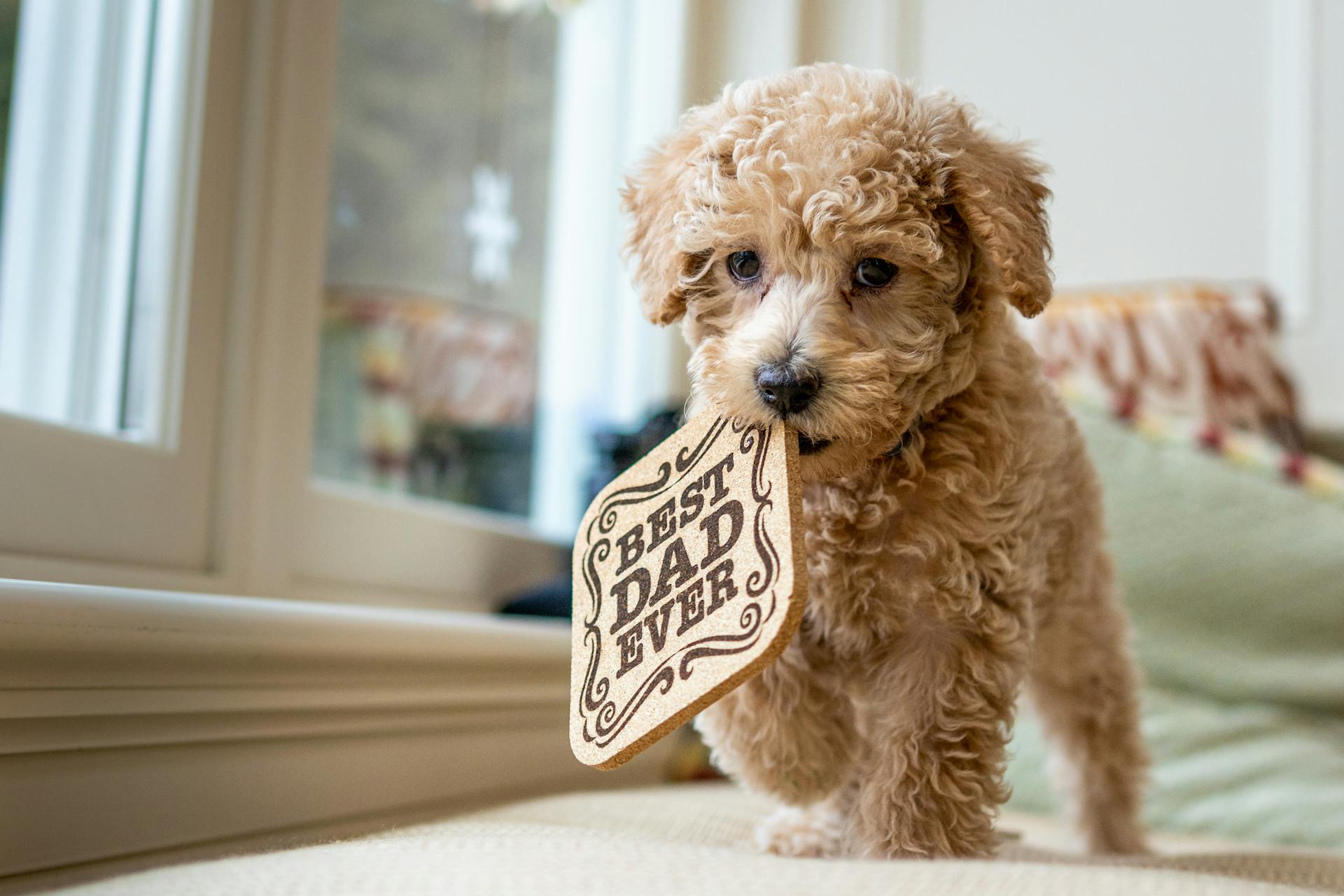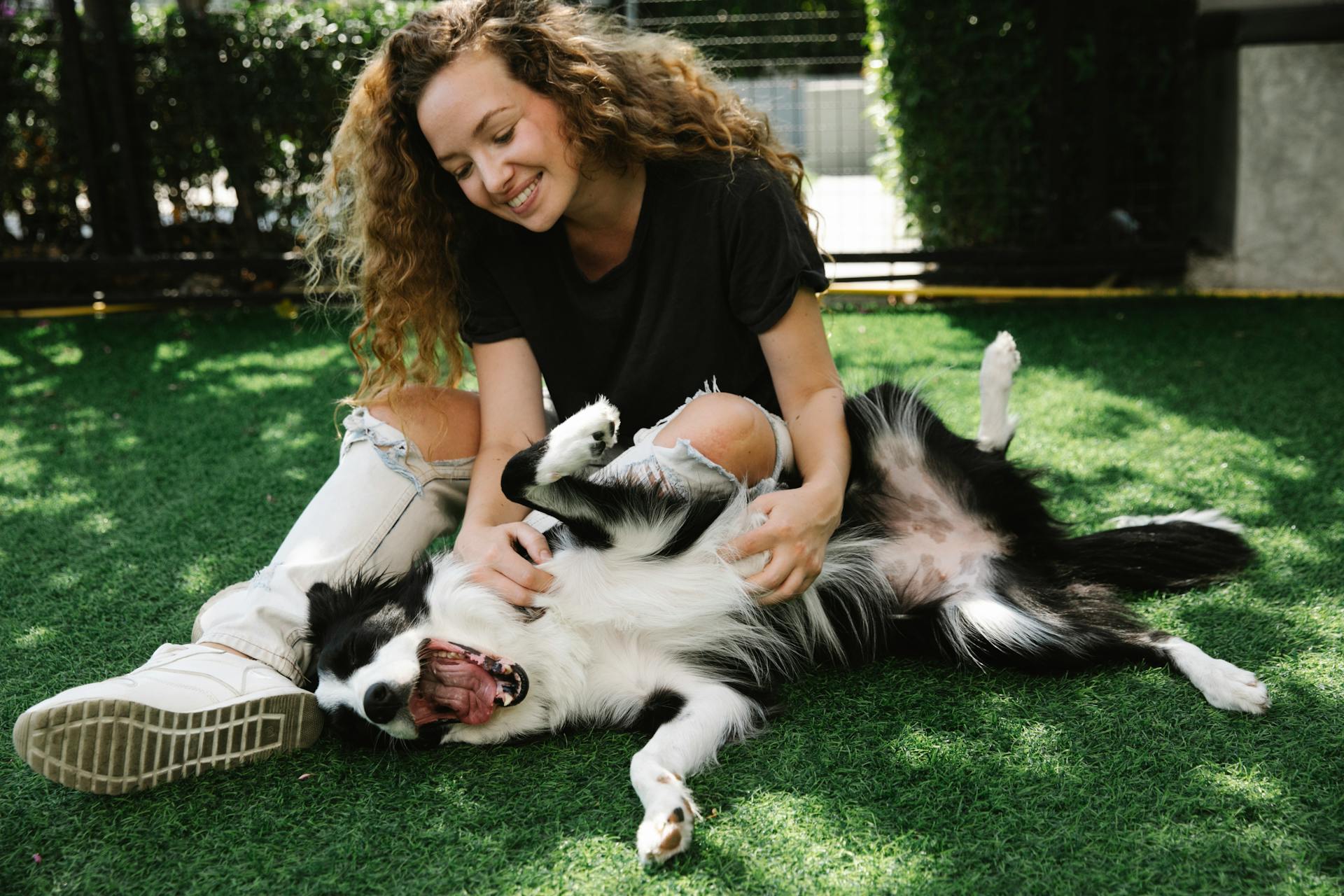
Finding a reputable Curly Coated Retriever breeder can be a daunting task. They are a rare breed, with only a few breeders in the world.
The Curly Coated Retriever Club of America is a great resource for finding a breeder. They have a list of approved breeders on their website.
Reputable breeders prioritize the health and well-being of their dogs. They will have their breeding stock tested for genetic diseases and ensure they have a good temperament.
A good breeder will also ask you plenty of questions to ensure you're a good fit for a Curly Coated Retriever. They want to make sure you can provide a loving home for one of their puppies.
On a similar theme: How Much Are Curly Coated Retriever Puppies
Care and Maintenance
The curly coated retriever's coat is relatively simple to maintain, requiring only standard baths and routine grooming care for the nails, teeth, and ears.
This breed's signature curls are totally natural and look their best when they're allowed to air-dry after a bath. Curly-coated retrievers don't need baths very often, unless your pup has a penchant for rolling in mud puddles or getting particularly dirty at the dog park.
On a similar theme: Curly Coated Retriever
They shed throughout the calendar year and seasonally, which means investing in a metal, rake-style brush can be helpful for purging all of that dead hair to make room for fresh, new hairs. Brushing a curly-coated retriever's hair with other types of brushes can cause their beautiful curls to become frizzy.
Trim your dog's nails regularly, either with a grinder, clippers, or some combination of the two. This will keep them walking and running their best.
Keep training sessions short and exciting to keep your curly engaged, especially if you adopted a curly-coated retriever puppy. These dogs do best when rewarded for their efforts, so be sure to use plenty of positive reinforcement like praise, treats, and pets.
Brush your curly's teeth at least twice a week to keep them healthy and strong. Check their ears regularly for signs of infection and trim their nails as soon as they start clicking against the floor.
Additional reading: Curly Hair Cavapoo
Health and Nutrition
The Curly Coated Retriever is a generally healthy breed, thanks to responsible breeders who test their dogs for issues that can affect the eyes, heart, and hips. They also perform specific DNA tests to screen for genetic issues like progressive retinal atrophy, exercise-induced collapse, and glycogen storage disease.
Curly-coated retrievers may be susceptible to certain cancers like lymphoma as well as bloat, also known as gastric dilatation-volvulus, which is a life-threatening stomach condition. This is why some veterinarians recommend surgically tacking the curly-coated retriever's stomach to his abdominal wall.
To keep your curly-coated retriever healthy, it's essential to take care of their teeth. Brushing their teeth at home each evening can be a fun way to bond with them, and regular deep-cleaning appointments at the vet may also be necessary. A veterinarian can examine a dog's teeth and help determine if and when professional cleanings are necessary.
Here are some common health issues that can affect curly-coated retrievers:
- Elbow Dysplasia
- Hip Dysplasia
- Progressive Retinal Atrophy
- Glycogen Storage Disease
- Gastric Dilatation-Volvulus (GDV)
Health Risks
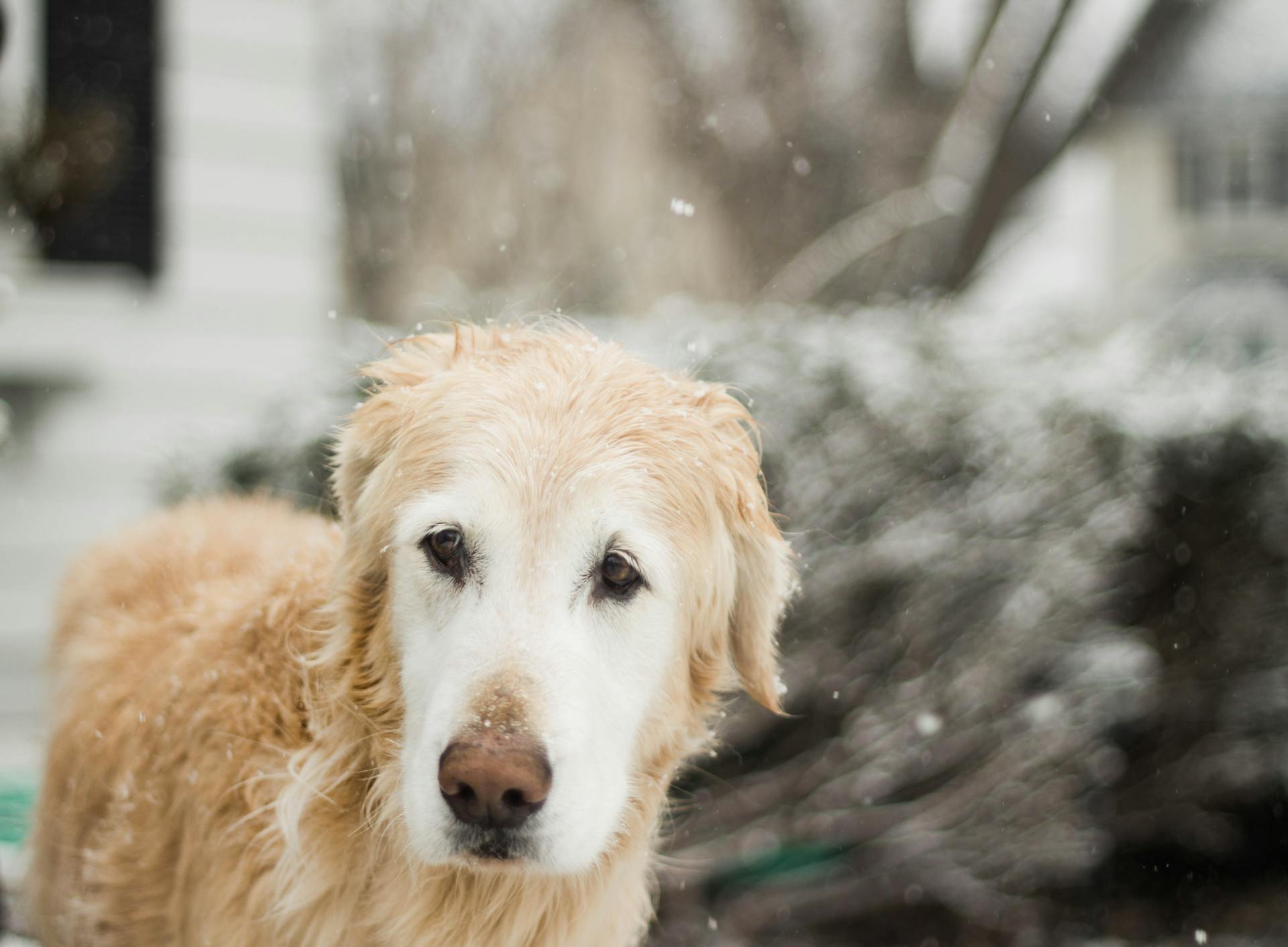
Curly-coated retrievers are generally a healthy breed, but like all breeds, they can be prone to certain health issues.
Elbow and hip dysplasia are common health problems in curly-coated retrievers, which can cause joint malformation and may require surgery in severe cases.
Glycogen storage disease (GSD IIIa) is a rare genetic disease that affects glycogen production in the body, and curly-coated retrievers can be affected by it.
Progressive retinal atrophy, entropion, and ectropion are eye problems that can affect curly-coated retrievers, and can lead to vision loss or blindness.
Gastric dilatation-volvulus (GDV or bloat) is a life-threatening stomach condition that can occur in curly-coated retrievers, and can be prevented by surgically tacking the stomach to the abdominal wall.
Cancer is also a concern in curly-coated retrievers, and regular testing can help identify affected dogs early on.
Pattern baldness is a non-serious health concern that can cause hair loss and exposed skin, which must be protected from the sun.
Consider reading: Flat Coated Retriever Health Issues
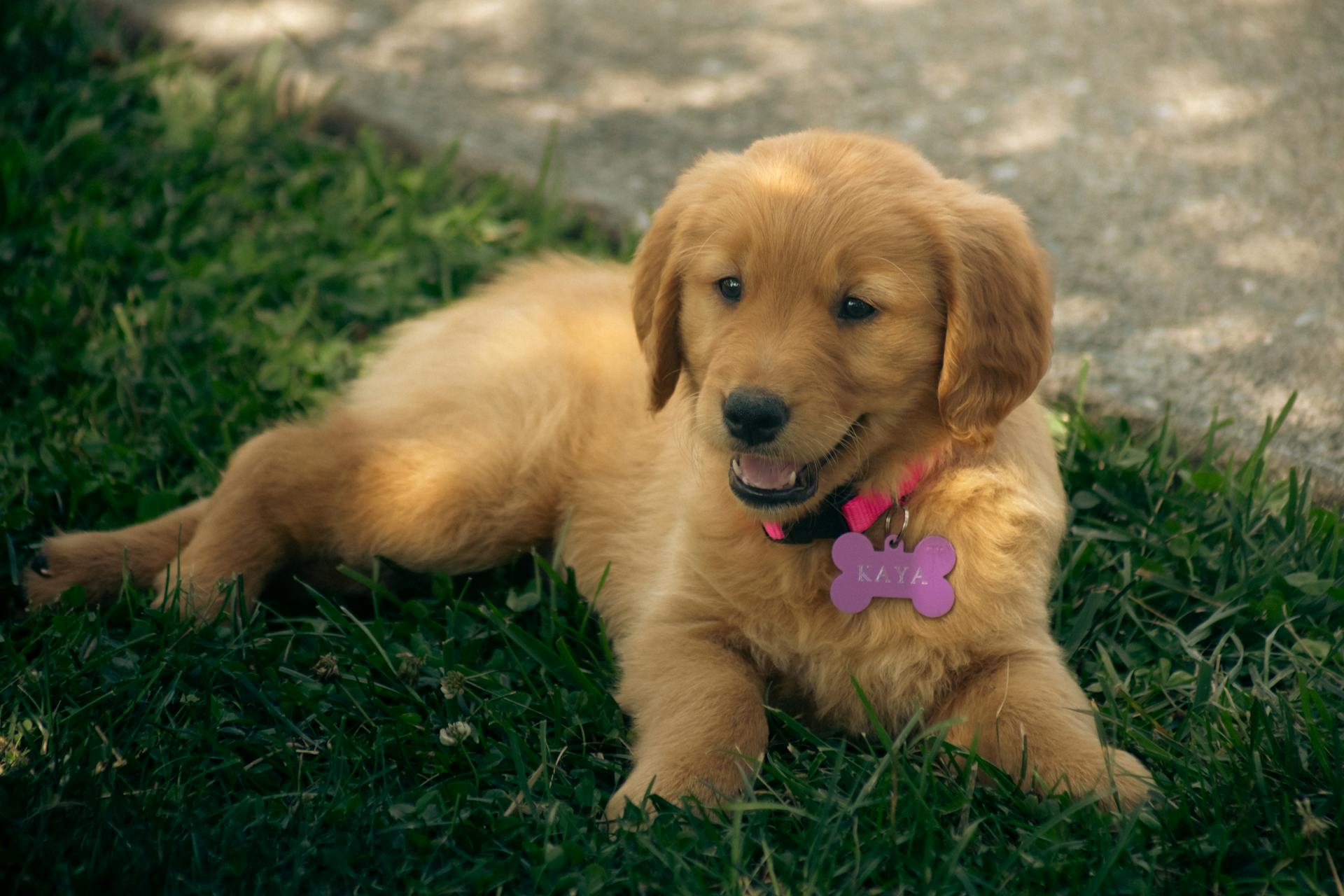
To ensure the health of your curly-coated retriever, it's essential to have the following health evaluations performed on each parent:
- Hip evaluation
- Ophthalmologist evaluation
- Cardiac exam
- GSD IIIa DNA test
- EIC DNA test
- Cord-1 PRA DNA test
Here are some common health risks to be aware of in curly-coated retrievers:
Regular dental care is also essential for curly-coated retrievers, as they can be prone to dental problems. Brushing their teeth at home and regular deep-cleaning appointments at the vet can help keep their teeth healthy.
Diet and Nutrition
Curly-coated retrievers are an active, athletic breed that requires high-quality dog food rich in protein to meet their energy needs.
Dogs that exercise daily will need more food to fulfill their calorie needs, so be sure to monitor their intake accordingly.
Feeding your curly several smaller meals per day can help prevent bloat, as it reduces the likelihood of gulping down food too quickly.
Training and Behavior
Training and behavior are crucial aspects of owning a Curly Coated Retriever. They are eager to learn and can begin training with basic obedience lessons as early as eight weeks of age.
This breed is a natural at hunting and retrieving game and waterfowl, but they also excel in agility, flyball, and other canine sports. Owners can give these dogs the opportunity to shine in various activities.
Curly Coated Retrievers are highly intelligent dogs, but they can be a little reserved around strangers. Socialization at an early age is essential to get them used to different stimuli.
They have a low attention span, so training requires variation and consistency. Crate training is often recommended to keep them out of trouble and get them used to confined spaces.
Exercise is essential for this energetic breed, with a daily activity of up to an hour-and-a-half recommended. This can include walking, running, or swimming, and a house with a backyard is ideal for expelling energy.
Curly Coated Retrievers love games and silliness, and puzzle toys are an excellent way to keep their minds occupied. They can become bored easily, so mental stimulation is vital to prevent destructive behavior.
Consider reading: Double Coated Golden Retriever
Adopting or Buying a Dog
Adopting or buying a curly-coated retriever can be a wonderful experience, but it's essential to do your research first. If you're looking to adopt, check out breed-specific rescue groups that help these lovable dogs find new homes.
Curly-coated retrievers are less popular than other breeds, so they're not as likely to be found in local shelters. You can find a dedicated community of breeders to learn about if you're planning to adopt a puppy.
Responsible breeders provide relevant genetic testing results and take excellent care of their dogs. CCR puppies typically cost between $1,000 and $2,500, but prices can vary depending on pedigree and availability.
Prospective adopters should also prepare to join a waiting list for puppies. To start your search, check out these resources for the national breed club, breed-specific rescues, and the AKC:
- Curly-Coated Retriever Club of America
- Curly-Coated Retriever Club of America Rescue
- AKC Curly-Coated Retriever Breeders
History and Group
The Curly Coated Retriever has a rich history that dates back to the 18th century in England. The breed is believed to have originated from breeding game dogs like the English Water Spaniel and Retrieving Setter.
These early founding breeds are now extinct, but the Curly Coated Retriever remains a beloved breed with high populations in Australia, Europe, and the United States. The breed's tight curls are a result of crossbreeding with other breeds, including the Irish Water Spaniel and Poodle.
The Curly Coated Retriever was a favorite among the hunting class for its ability to retrieve fallen prey, and it was shown at English dog shows as early as 1860.
Curious to learn more? Check out: Types of Retrieving Dogs
History of the
The Curly-Coated Retriever is a breed with a rich history that spans centuries. It's believed to be the oldest of the retriever breeds.
The breed originated in England in the 18th century, with possible contributions from the English Water Spaniel, Retrieving Setter, St. John's Water Dog, and Irish Water Spaniel. The tight curls of the breed are a significant indicator of its ancestry.
The Curly-Coated Retriever received attention at dog shows in England in the 1860s and was later exported to Australia and New Zealand. This breed was highly valued for its versatility in the field as a hunting companion.
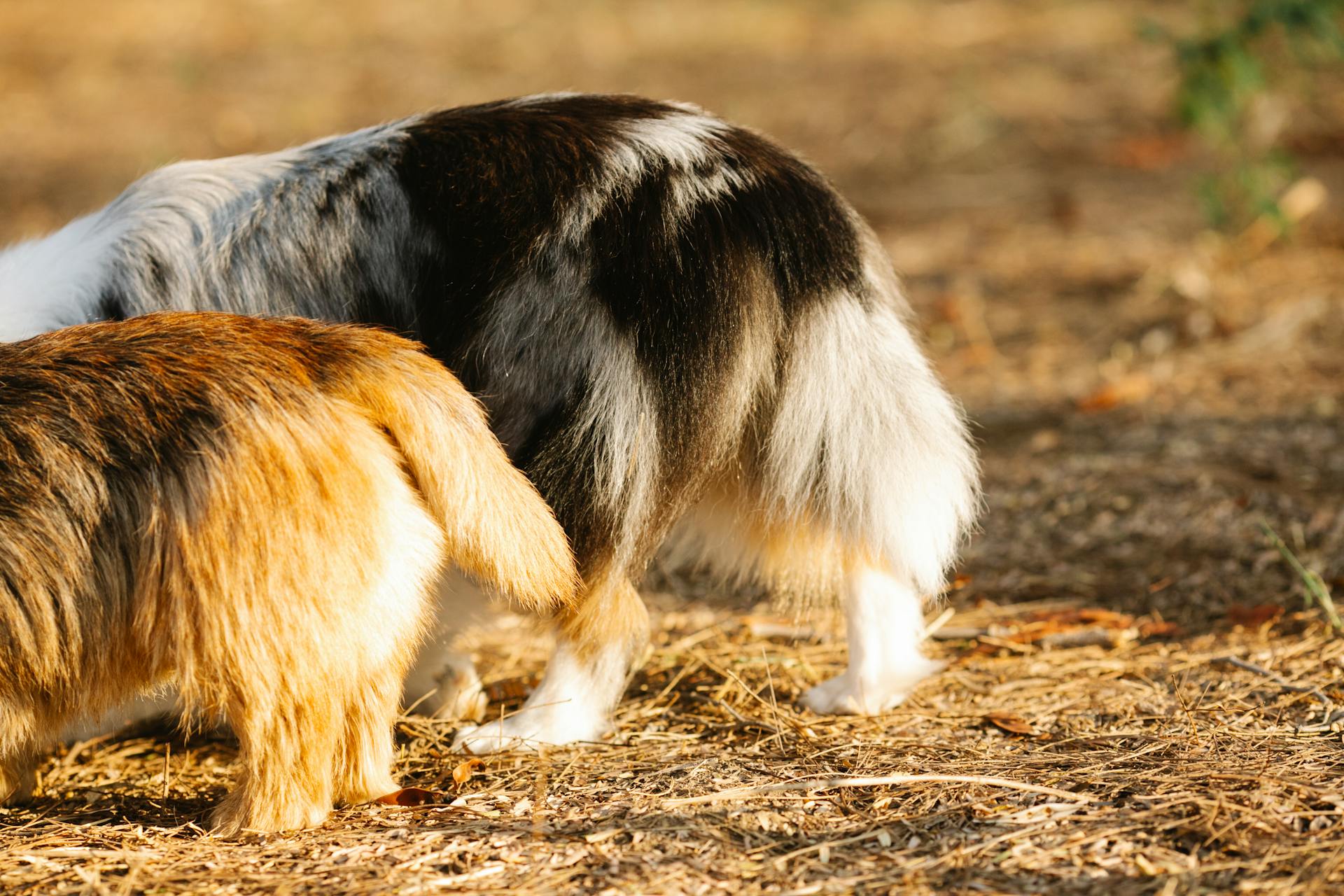
The breed was first introduced to the United States in 1907 and received official recognition from the American Kennel Club in 1924. The breed's numbers waned in the first half of the 20th century due to the decline in hunting and the popularity of other breeds.
Despite this, the Curly-Coated Retriever remains a beloved breed, with high populations in Australia, Europe, and the United States. Its dedication and passion from the breed community have helped prevent it from going extinct.
The Gundog Group
The Gundog Group is a fascinating category of dogs that were originally trained to find live game and/or to retrieve game that had been shot and wounded.
These dogs are incredibly versatile, making them ideal all-round family dogs due to their temperament.
They are divided into four categories: Retrievers, Spaniels, Hunt/Point/Retrieve, Pointers, and Setters.
Many of the breeds within these categories are capable of doing the same work as the other sub-groups, which is a testament to their intelligence and adaptability.
Their calm and gentle nature makes them a great fit for families with children, and their love of activity makes them perfect for active owners who enjoy outdoor pursuits.
A different take: Returned Dogs
Standards and Colors
The Curly Coated Retriever breed is known for its distinctive curls and robust appearance. They come in two main colors: black and a reddish-brown.
Their coats are a key part of their identity, and breeders should be aware of the breed standard colors. Black is a traditional and well-known color in this breed.
The breed standard colors include black and liver, which is a reddish-brown color. This means that these colors are accepted within the breed standard.
Here are the breed standard colors for the Curly Coated Retriever breed:
- Black
- Liver
These colors are a result of the breed's history and development, and breeders should strive to produce dogs that meet these standards.
Fun Facts and General
The Curly Coated Retriever is a breed that's known for its unique appearance. They have a curly, non-shedding coat that requires regular grooming.
Their curly coat is not just for show, it's also a sign of their intelligence. They're highly trainable and thrive on mental and physical stimulation.
In fact, Curly Coated Retrievers are one of the top 10 smartest dog breeds, according to breed experts. They're known to be quick learners and can pick up commands with ease.
Their intelligence and trainability make them a great breed for active families or individuals who enjoy outdoor activities. They love to run, swim, and play fetch.
Curly Coated Retrievers are also known for their loyalty and affection towards their family. They make great companions and are often described as "velcro dogs" because they love to be close to their people.
Despite their high energy levels, Curly Coated Retrievers are generally a healthy breed with a lifespan of 10-12 years. With proper care and attention, they can live a long and happy life.
Recommended read: Great Pyrenees and Golden Retriever Mix
Sources
- https://www.akc.org/dog-breeds/curly-coated-retriever/
- https://www.thesprucepets.com/curly-coated-retriever-dog-breed-profile-4770739
- https://wagwalking.com/breed/curly-coated-retriever
- https://www.thekennelclub.org.uk/search/breeds-a-to-z/breeds/gundog/retriever-curly-coated/
- https://www.dailypaws.com/dogs-puppies/dog-breeds/curly-coated-retriever
Featured Images: pexels.com
